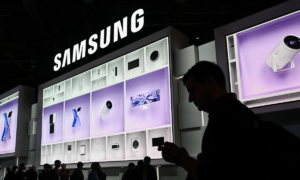Samsung’s upcoming Galaxy S25 Ultra is expected to be a powerhouse with a refined design and impressive performance powered by the Snapdragon 8 Elite chip. However, Samsung may make some trade-offs to manage rising production costs, particularly in the display department.
Samsung’s Cost-Saving Move: M13 Display Materials for Galaxy S25 Ultra
The Galaxy S25 Ultra will use Samsung’s M13 OLED display materials instead of the newer M14 materials available in devices like Apple’s iPhone 16 Pro and Pro Max, according to Ross Young, CEO of Display Supply Chain Consultants (DSCC). This decision stems from Samsung’s need to offset the increased spending on AI technologies, upgraded memory, and the high cost of the Snapdragon 8 Elite chip, which is reported to be around 21% pricier than its predecessor.
How M13 Materials Affect Galaxy S25 Ultra’s Display Quality
Opting for M13 materials instead of M14 brings noticeable differences. M14 displays offer 20-30% higher efficiency and greater brightness compared to M13, along with a longer lifespan. The improved brightness, energy savings, and color accuracy of M14 materials in OLED panels are intended to create a more vibrant and durable display—qualities Samsung Galaxy S25 Ultra users will miss out on.
Conflicting Reports on Display Upgrades
Although Samsung Display already produces M14 OLED panels, only Apple’s latest iPhones are set to use this advanced material for now. Some sources, like the tech insider @UniverseIce, have speculated that the Galaxy S25 Ultra display would be upgraded to M14, citing expected improvements in brightness, viewing angles, and color accuracy. However, Young’s report suggests that Samsung’s mobile division is sticking with M13 for its 2025 flagship model to manage costs, potentially to allow for other enhancements in AI and processing power.
What’s Next for the Galaxy S25 Ultra?
Despite this setback in display technology, the Galaxy S25 Ultra will likely offer improvements over the current S24 Ultra. Samsung aims to launch the Galaxy S25 series in early 2025, around January or February, and further details about its features are expected to emerge in the coming months.
Stay tuned for updates on Samsung’s next-generation flagship and its balance between cutting-edge performance and cost-saving choices.





